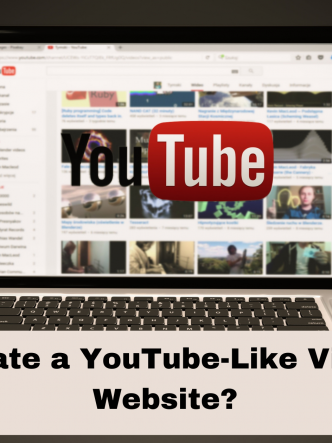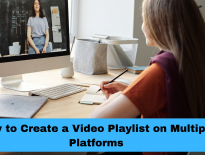Discover how to make your own video in the format that has changed the way people think about public speaking.
Local TEDx events have surged in popularity in recent years. You’d be forgiven for thinking they’re a new phenomenon.
The first TED conference actually took place in 1984. Its presentations were not carefully rehearsed speeches, but improvised demonstrations of the day’s most innovative technologies – like the compact disc and an early Apple Macintosh computer.
In time, TED evolved to become an invitation-only speaking event for some of the world’s most sought-after intellectuals. Their entertaining, spontaneous speeches focused on ideas worth spreading, which became TED’s official mantra.
Fast forward to today, and thousands of local TEDx events take place in multiple countries and languages around the world. The format itself has become a popular way for thought leaders in every industry to make their voices heard.
How to Make Your Own TED Talk Video
First, we need to distinguish between official TED Conferences and locally inspired TEDx events. Official TED conferences are open only to approved applicants, and the organization handpicks speakers for its events.
Local events, on the other hand, are far more accessible. Anyone can make their own TED Talk video, or create an event inspired by the TED conference. You may not be able to use TED branding, but you can create content that competes with some of the greatest speeches in the conference repertoire.
1. Perfect the Presentation
The final, polished TED talk video recordings that millions of people view every year take months of work to create. TED employs a team of coaches and public speakers to help candidates write, edit, re-write, and rehearse their speeches before the final event and video presentation.
TED curator Chris Anderson actually detailed the steps he took to coach a 12-year-old Kenyan Maasai named Richard Turere on how to give a successful TED presentation. His coaching helped bridge cultural and language barriers and gave Richard the confidence he needed to deliver one of the year’s most outstanding speeches, despite no public speaking previous experience.
Chris points out that most live presentation drafts try to cover too much ground too quickly. Covering an entire career in 20 minutes is simply not possible. He routinely coaches speakers into sticking with a few key details and the specific examples that help reinforce those details. Instead of giving a broad overview about a subject, Chris encourages speakers to dig deep into their own contribution to that subject – however small or detailed their contributions might be.
Framing is also an important element of a successful presentation. Most successful TED talks follow a simple detective story format. The speaker begins by presenting a problem, then describes searching for a solution. Eventually there is an “aha” moment that causes the audience’s perspective to shift in a meaningful way.
The thing that makes this approach successful is that it is idea oriented. Speakers who focus on ideas can relate those ideas better than speakers who focus on organizations or identities. It’s worth noting that official TED speakers never spend too much time talking about themselves.
2. Memorize Your Speech
One of the first decisions that any public speaker has to make is how to deliver the speech itself. Many public speakers rely on reading scripts or using teleprompters. These are undoubtedly useful technologies, but TED Conference coaches almost never allow speakers to use them.
Instead, TED talk coaches tell speakers to memorize their speech – word for word, verbatim. This is an intimidating task, but it’s also a valuable one with ancient roots.
Ancient Greek statesmen and poets intentionally avoided reading their works in performance, preferring to use mnemonics to memorize tens of thousands of lines at a time. Plato famously believed that writing was simply insufficient for transmitting knowledge – at best, it gave the impression of knowledge, but never the substance.
Plato and Chris Anderson would agree that something is lost when a speaker reads a speech to an audience. Rehearsing your speech until you can deliver every word without requiring an external reminder will maximize its impact. However, getting there takes time and effort.
Memorizing your speech will also help you combat stage fright. Remember, one of the defining characteristics of a TED talk is that it is delivered to a live audience. If you are creating your own TED-like live video experience, you will need to make sure you can comfortably deliver your speech in a room full of strangers. Memorizing the words will help you do that.
3. Organize the Live Event
Since writing and memorizing your speech is by far the most personally demanding part of the process, you should only begin organizing the live event once you have demonstrated progress. You don’t need to have your speech completely ready at this point, but you should feel confident that you will be able to deliver when it’s time.
TED coaches typically begin working with speakers six months before the official live event. Their goal is to have the speech in final, deliverable form one month before the event takes place.
If you want to use TED branding for your event, you can apply for a TEDx license or search for local events happening near you. TED sponsors global events at universities, libraries, businesses, and more. Your application has to follow a strict set of rules to earn TED branding.
However, there is nothing preventing you from organizing and hosting your own TED-style live speaking event, as well. This might be an attractive option for speakers who would rather promote their own brand or cater to their audience in ways not possible through TED’s official branding.
In general, both official TEDx events and unofficial TED-inspired events have these things in common:
- Maximum capacity of 100 guests. Most successful TED talks are designed to be cozy and simple. Having more than 100 guests transforms the nature of the event.
- The ability to project and watch video. Many speakers augment their content with video. If you plan on broadcasting your event live, you will need a streaming-ready video hosting platform.
- A stage for hosts and speakers. Your stage will need a PA system equipped with enough microphones and personal monitoring solutions for every speaker.
- Exhibit space for sponsors. A lounge, lobby, or other area where you can set up sponsored lunches and other supplementary events is a huge plus.
4. Promote, Host, and Record the Event
TED talks and TED-inspired speaking events are designed to give exposure to great ideas. Promoting the event and capturing its content is key to making sure that those ideas have the opportunity to take flight.
Video webcasting TEDx events is a great way to amplify their reach. Official TEDx licensees can use TED’s live stream channel for the purpose but are not limited to that channel exclusively. You can use your own video hosting platform to reach viewers online and give them access to your content in real-time as well.
In addition to live webcasting, you can also capture and edit raw footage to create a more polished version of the event. Official TEDx event hosts will typically upload their talks to the TEDx official YouTube channel. Unofficial TED-inspired event hosts will want to maximize visibility through video analytics for their content in other ways – such as through sponsorships and through participant networks.
After you finish hosting your video and event, you should send out an attendee survey to everyone who participated. This will give you valuable insights about how people felt about your live video event. You can compare this information with real-time data gathered from your video host to pinpoint areas of improvement through video heatmaps.
If you plan on repeating the live speaking experience, having survey data available will make it much easier for you to organize a successful event. Just like the challenge of delivering a great speech, the challenge of organizing a great event is something that you get better at with practice.
Use Video Hosting Analytics to Capture Viewer Data
Whether delivering your speech through an official TEDx event channel or creating your own TED-like event, having a high-performance video platform is key to measuring the success of your presentation.
Cincopa is a hosting service and video platform that allows content creators to measure granular analytics from individual viewers, providing valuable insight into user engagement. Host your presentation on our platform and earn the ability to make data-driven decisions with your content.








